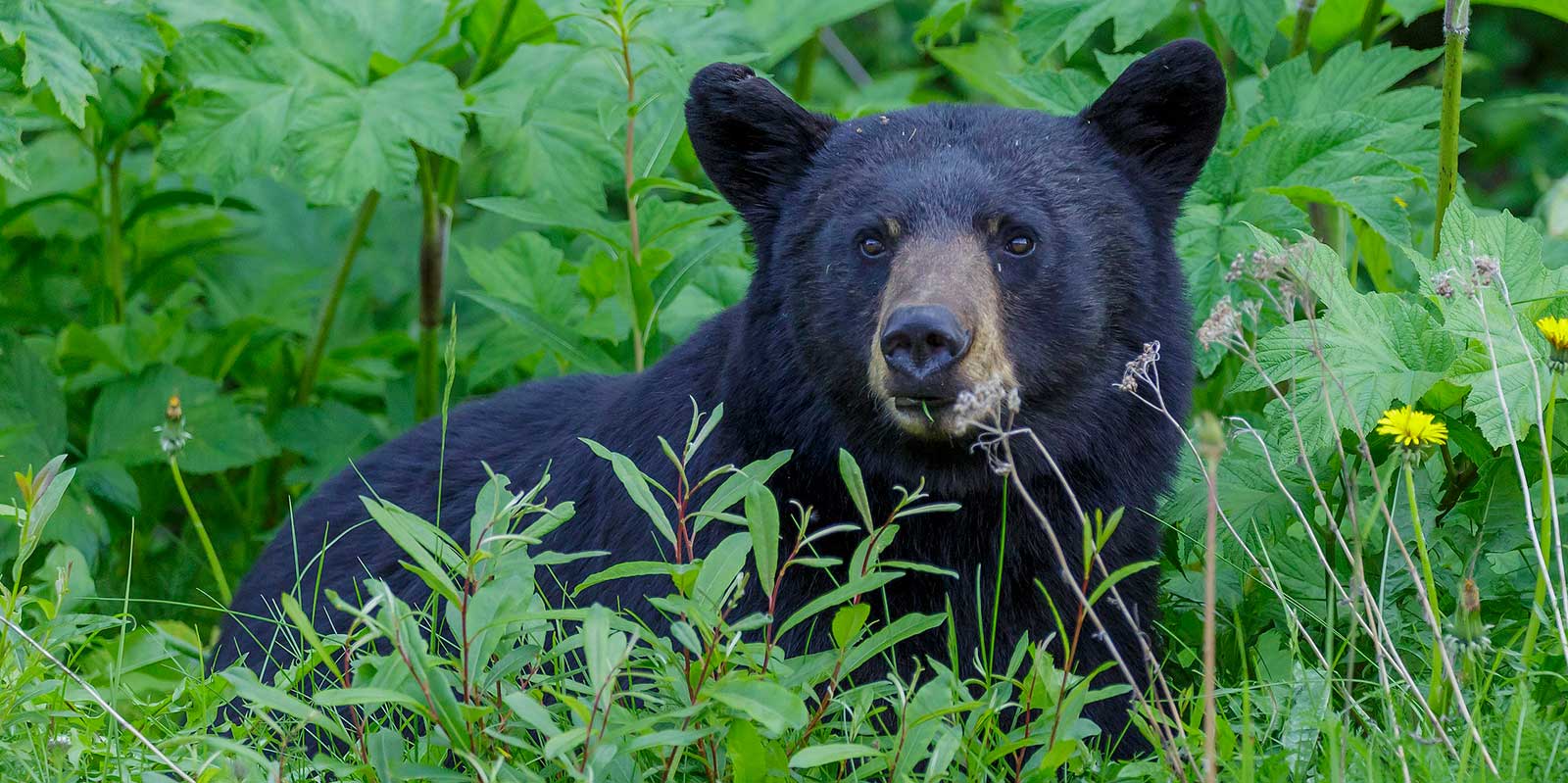A (brief) natural history of black bears in Sonoma County
By Sheila Murphy
Are there bears in Sonoma County's parks? Yes, signs of black bears have been observed in or near parks throughout the county. Should park-goers be worried? No. These shy and elusive animals are interested in fruits and nuts, not hikers and bikers. Still, here’s what you should know about the region’s black bears and how to maintain a safe, healthy environment for bears and humans.
Behavior, color, size and diet
Black bears are experts at staying hidden within our forests. They’re shy, in part, because they once lived alongside more powerful animals like grizzly bears and wolves and became adept at avoiding potential predators. Because grizzlies no longer roam California, black bears are now the only bears in our state.
The name “black bear” can be misleading because these bears range in color from cinnamon to brown to black to tan. Some also have white patches on their chests.
Black bear sows (females) typically weigh 100 to 200 pounds while boars (males) average 150 to 350 pounds, though some boars may grow to 500 pounds.
Black bears are omnivores and primarily eat fruits, acorns, bay nuts, insects, forbs and, in the spring, grass. Their scat helps disperse seeds and encourage biodiversity.
On occasion, black bears will eat fawns, birds and other animals and have been known to take over deer kills from mountain lions. They also can be attracted to human sources of food, so it’s important to keep food and scented items securely stored where bears can’t get them.

Marking and climbing trees
Black bears in Sonoma County have a penchant for making daybeds near large Douglas firs. They will mark trees by biting, clawing or rubbing their backs and other body parts against trees to leave behind their scent, and these behaviors serve as forms of communication.
With their powerful limbs and well-developed claws, bears are excellent climbers. If a mother bear perceives danger, she may slap a tree with her paw as a signal for her cubs to race up the tree to safety. Bears choose specific trees for this purpose, and wildlife experts refer to the trees as “babysitter trees.”
Seasonal patterns
In late summer and fall, bears enter a state called hyperphagia, during which they pack on as many calories as possible to get through the winter. This is when we see the most bear activity recorded on our wildlife cameras, though bears can be in the parks at any time of the year.
Bears tend to mate in June or July, and cubs are typically born in February, weighing less than 1 pound. Sows and cubs emerge from their dens in April or May, and cubs will stay with their mothers for up to two years while learning about food sources and unsafe places to avoid.
Young black bears disperse in the spring, which is when we may see bears in unexpected places. They may follow a creek to establish new ranges away from other bears, only to find themselves in urban or suburban areas. When people don’t interfere, bears will usually find their way back to more wild areas. The size of a bear’s home range likely depends on food and water availability and has been noted to vary from 15 to 80 square miles.
Local research
There are 50,000 to 80,000 black bears in the state, according to the California Department of Fish and Wildlife, with an unknown number in Sonoma County.
Sonoma County Regional Parks and its partners are members of the North Bay Bear Collaborative, an organization working to glean more information about the area’s bears. The collaborative collects scat for DNA analysis to determine genetic linkages, educates the community on how to co-exist with bears and recommends park management practices like the use of bear-resistant food storage and garbage receptacles.

Bears in Sonoma County parks
Regional Parks has documented bears across Sonoma County through wildlife cameras, tracks and other signs like scat, bite marks on trees and day beds. Observations have been made in or adjacent to the following parks and preserves: Foothill, Taylor Mountain, Crane Creek, North Sonoma Mountain, Hood Mountain, Calabazas Creek, Wright Hill, Soda Springs, Shell Beach, Carrington Ranch, Santa Rosa Creek Trail, West County Trail, Laguna de Santa Rosa Trail, Healdsburg Veterans Memorial Beach, Stillwater Cove, Gualala Point, Del Rio Woods and Spring Lake.
Despite the widespread documentation, sightings of black bears in Sonoma County are incredibly rare - much rarer than mountain lion sightings. Humans and bears have shared the landscape for thousands of years, and bears prefer to avoid people. However, the bear population seems to be increasing in Sonoma County, so it is possible that sightings may become more frequent. For tips on how to recreate safely in bear country, read our blog post: How To Be Bear Aware in Sonoma County Parks.
The two wildlife camera photos above were taken at Hood Mountain Regional Park.
Sheila Murphy is a wildlife management technician with Sonoma County Regional Parks.
Published January 2023



 Translate
Translate